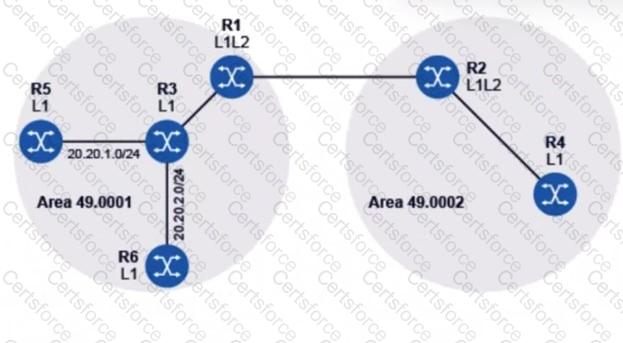
In the IS-IS network shown, router R1 has been configured to summarize subnetworks 20.20.1.0/24 and 20.20.2.0/24 as 20.20.0.0/16. Which routers’ routing tables will be reduced, compared to their routing tables before the summarization?
Two IS-IS routers are exchanging Hello packets. One is configured to use authentication and the other is not. Which of the following statements is TRUE?
Which of the following is NOT a required configuration step to successfully run IS-IS on a router?

Routers R1, R2, R3, and R4 are running IS-IS. Assuming all interfaces are added to IS-IS as point-to-point and no commands are issued at the interface level to restrict adjacencies, which of the following statements is TRUE?
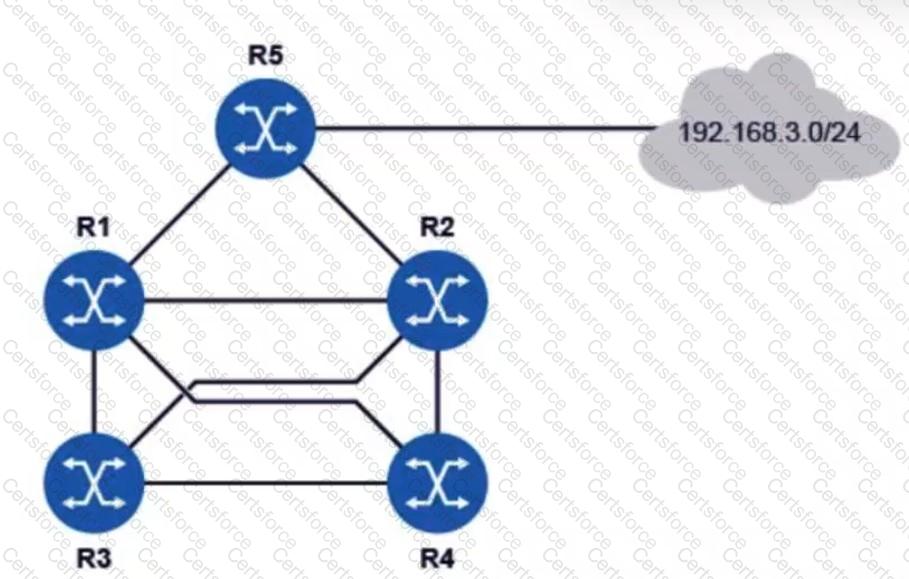
All routers in the diagram are running an interior gateway protocol (IGP) and have been configured with an ECMP value of 4. Router R5 advertises the prefix 192.168.3.0/24 using the IGP. Assuming all links have the same cost, how many entries for prefix 192.168.3.0/24 will be in router R3’s routing table?
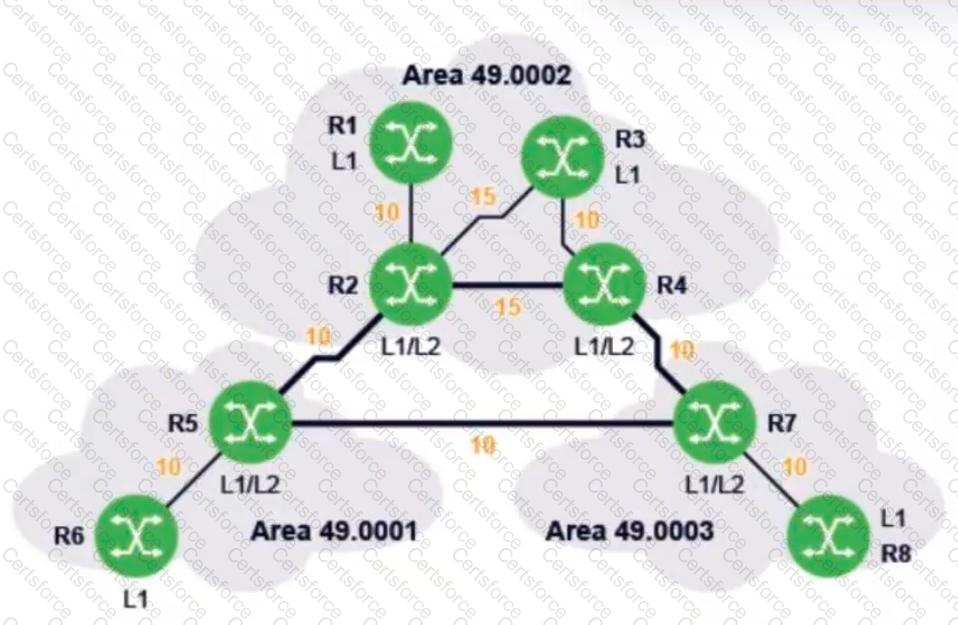
In the diagram, all routers are using IS-IS as their routing protocol. The number next to each link is its metric value.
What path will traffic follow from router R6 to router R3, and from router R3 to router R6?
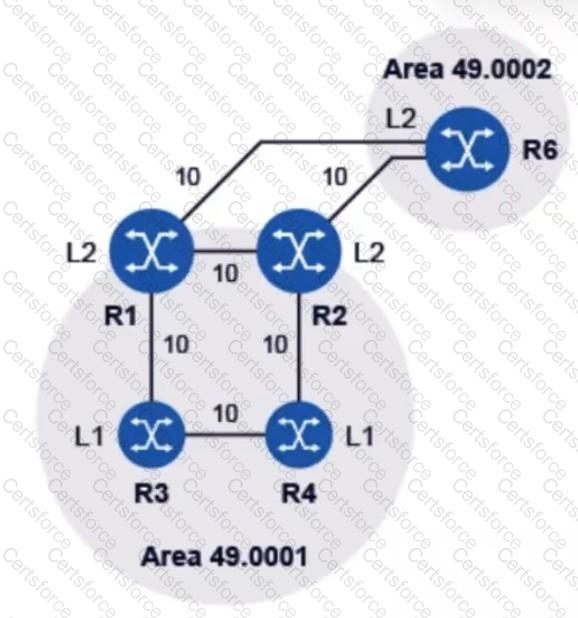
Examine the physical topology of the IS-IS network, the metrics of the links and the levels of the routers. All routers have their system interfaces included in IS-IS. Which of the following statements describes the route-table entry that router R4 will use to reach the system IP address of router R6?
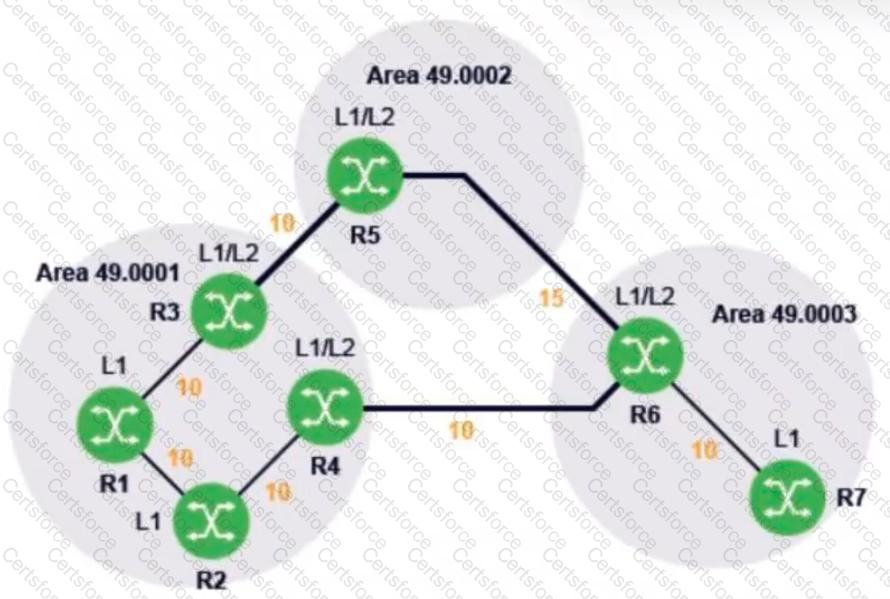
In the diagram, all routers are using IS-IS as their routing protocol. The number next to each link is its metric value.
What path will traffic follow from router R1 to router R7, and from router R7 to router R1?
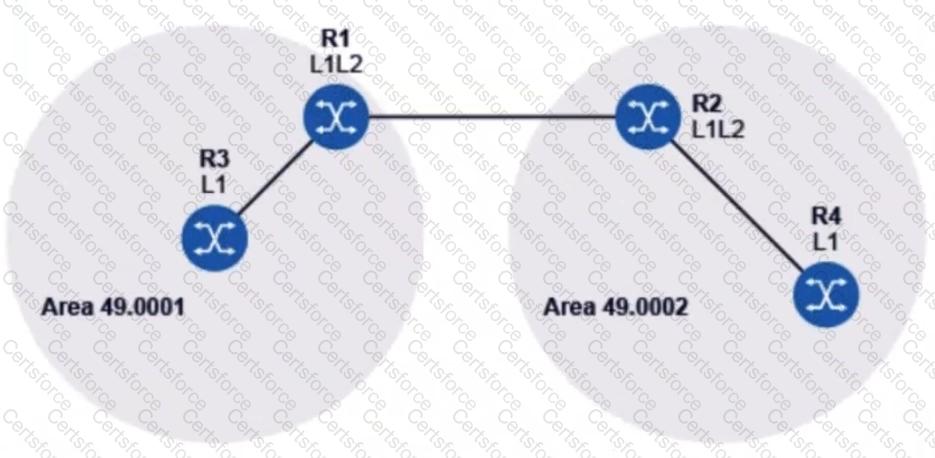
Routers R1 through R4 in the diagram have established IS-IS adjacencies. Router R1 is L1/L2 and is the DIS of its two broadcast interfaces. How many LSPs will it generate?
Which of the following definitions best describes route redistribution?